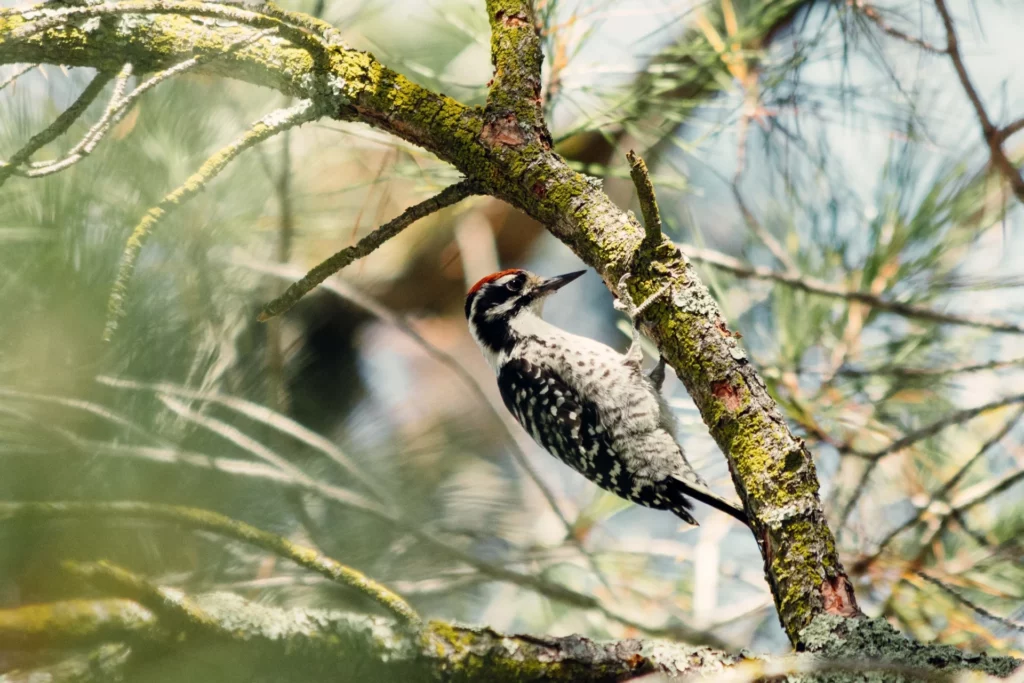I fell in love with woodpeckers once I watched the legendary cartoon – Woody Woodpecker. It felt so interesting to observe woodpeckers drumming their beaks against wood super fast.
The fascinating part is they never get injured or suffer from concussions while drumming. So, let’s unravel how do woodpeckers not get concussions while slamming their beak into trees multiple times in a millisecond.
To answer briefly, woodpeckers have biological features that protect their head and brain while pecking. In addition, their bone structure is spongy, meaning they can absorb the shock from each strike. Over the course of several years, their body has evolved and gained unique adaptations to save themselves from concussions.
Biological Explanation
To explain how woodpeckers avoid concussions, let’s look into the biology of these birds. Their unique physical structure and features protect them against concussions. Let’s break it down:
1. Woodpeckers Have A Bony-Tongue
Woodpeckers have a unique bony tongue. It’s a special type of tongue that wraps around the woodpecker’s skull. As a result, the tongue works like a natural helmet. It absorbs all the shock and prevents concussions.
In addition, the bony tongue creates extra blood circulation around the skull. The high blood circulation works as a cushion to protect the inner parts of the skull. Moreover, the bony tongue also helps to fill up the inner cavity around the brain, reducing the chance of any injuries.
2. Woodpecker’s Brain Moves Around The Skull
Unlike human brains, woodpeckers have smaller-sized brains. Plus, it contains lower fluid levels, preventing too much movement. The skull also helps the brain avoid any unnecessary movement.
As the woodpecker’s brain gets very little movement around the skull, drumming is relatively safe for them. Thanks to their specialized skull, they can easily create dents on trees without suffering a concussion.
Habits Make Impact
Apart from their biological aspects, their habits also play a role in preventing concussions. Woodpeckers are used to drumming their beaks against hardwood trees. Here’s how they do it:
1. It’s Their Way To Communicate

Instead of using vocal cords to communicate, woodpeckers drum their beaks against trees. It’s their way of communicating with each other. They listen to the pattern and velocity of the drumming sound. Afterward, they act upon the message they have received.
When pecking with their beaks, high amounts of pressure are exerted on their head. But it’s a necessary communication method for their daily life. They use the drumming sound to attract partners or send messages to potential competitors.
2. Those Tiny Foots Got The Additional Support
A woodpecker’s foot has two toes pointing forward and the rest pointing backward. It gives them a superior grip over any tree bark. As a result, drumming their beak against wood becomes way easier. That’s why you will never see any woodpecker struggling to get a grip on trees. And that is due to how their feet are designed.
Their tiny feet can also easily grip tricky objects as well. The foot works as additional support that allows woodpeckers to peck more efficiently. Moreover, their sharp claws help them to climb up and down trees. Overall, it helps them to stay in place and keep on drumming without any issues.
Do Woodpeckers Never Get Hurt?
In the natural habitats of woodpeckers, they can drum their beak on trees without any issues. They don’t suffer from concussions, headaches, or neck injuries because of how their organs are placed and their feets designed.
I was also surprised to learn that drumming their beak is a way for them to communicate. This is why it’s common in the woodpecker community to smash their beak against wood with force to make loud sounds. And they can continue doing this for all their life without any issues.
Conclusion
I hope this in-depth explanation of how woodpeckers do not get concussions while pecking has resolved some of your confusion. It’s very fascinating to me that woodpeckers can do this their entire life without any risk of injury. Their entire body is built in such a way that it prevents any concussions from the high-speed beak drumming.
There aren’t any other bird species in the wild that can do what woodpeckers can. They are truly a marvel to behold in the animal kingdom. And to think that they have biologically evolved just for this one particular task is jaw-dropping. With that said, we hope you learned a bit more about the nature of woodpeckers.

